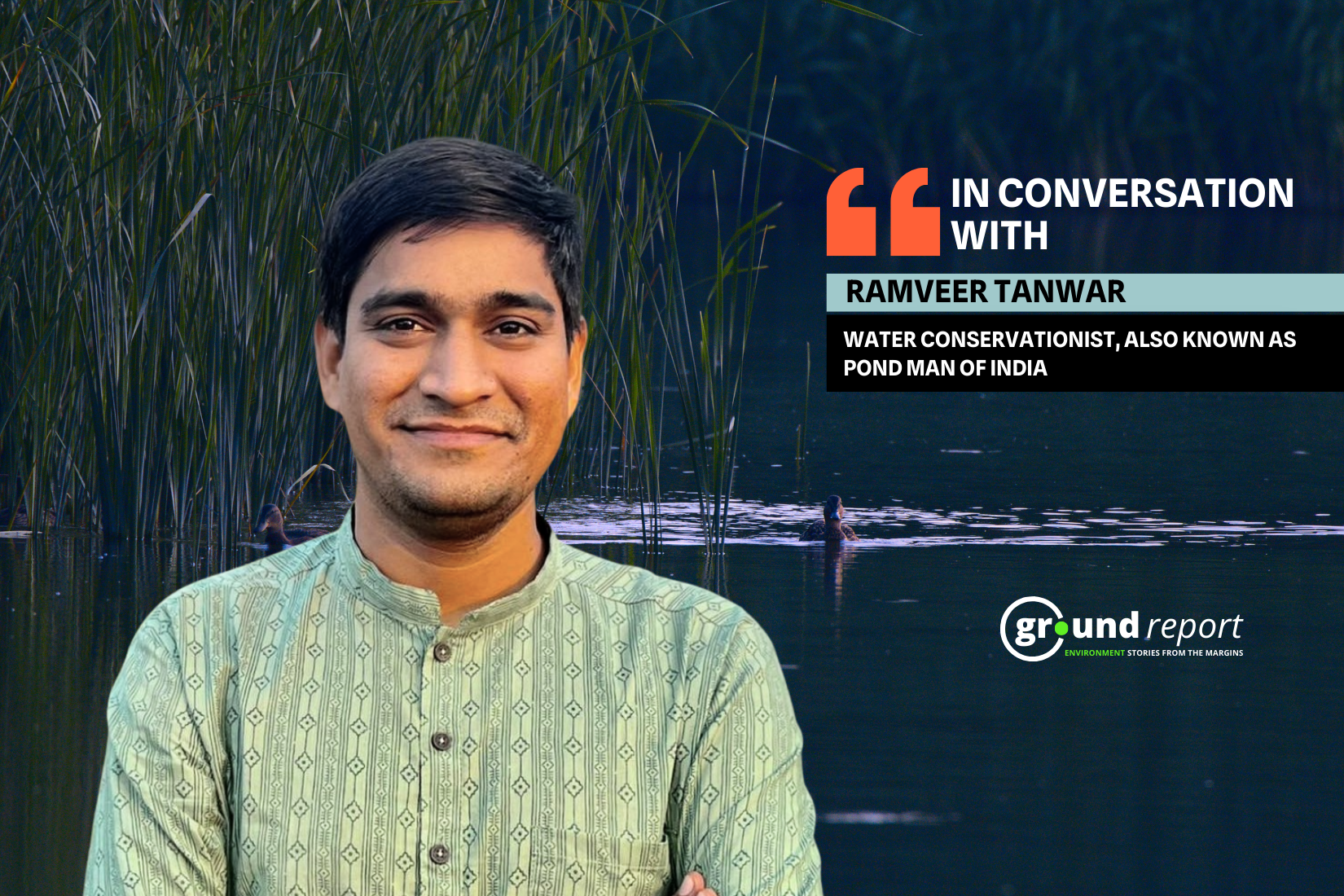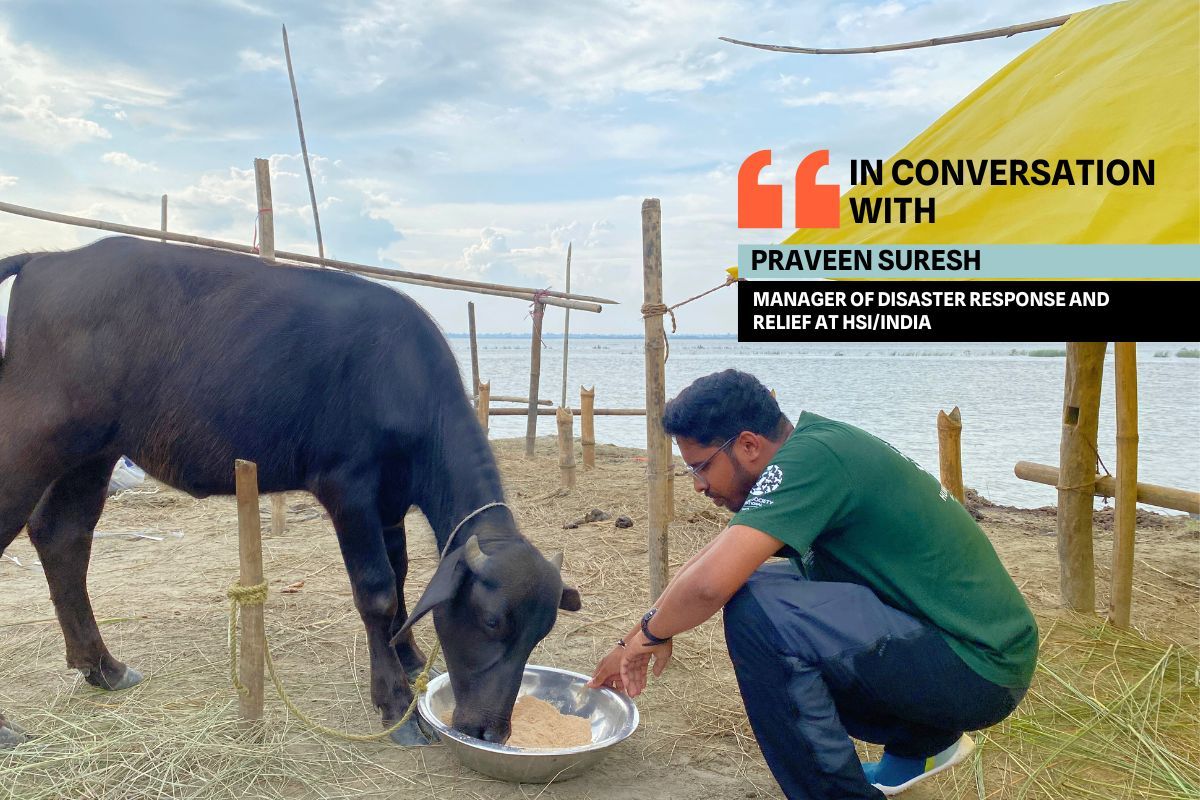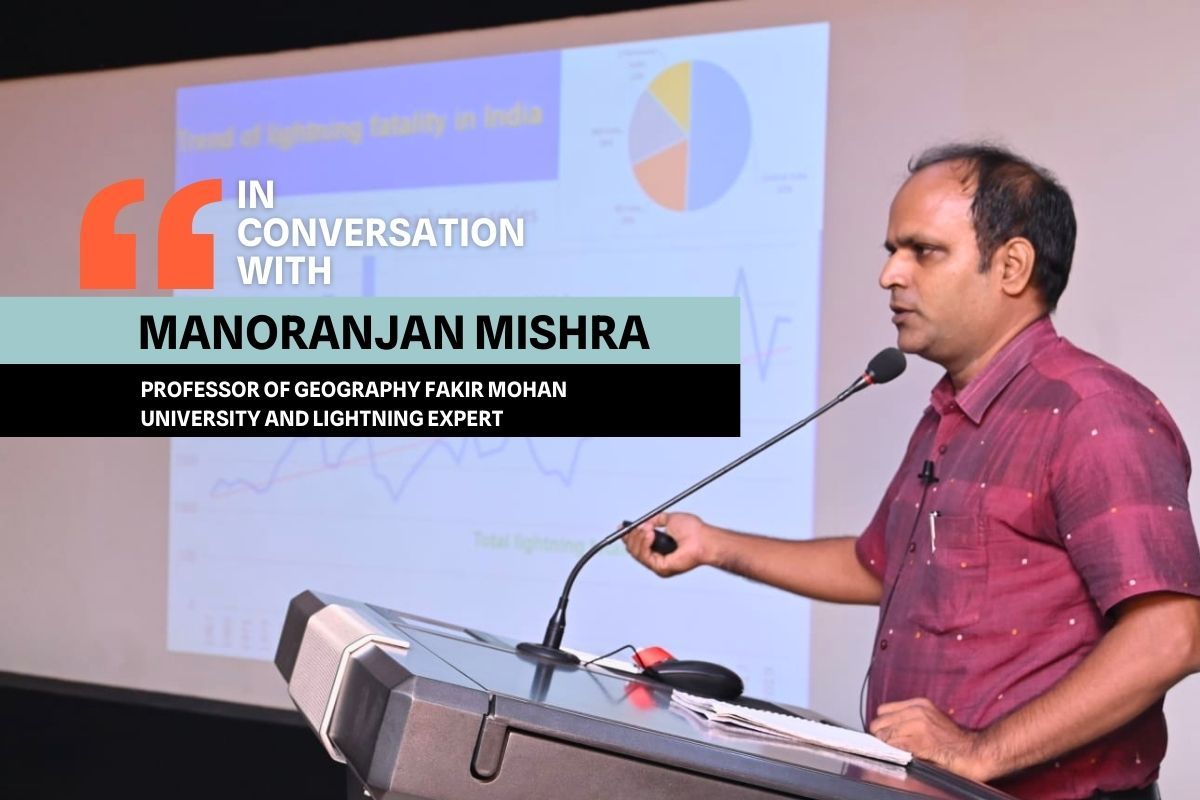Dr. Anirban Guha, a Professor in the Department of Physics, at Tripura University, has developed a lightning detection system with his research collaborators across the globe and students of his department. As an academician, Dr. Guha terms his system as a ‘citizen science project’ driven by voluntary contributions from various sections of society. The system is operational and under constant improvement, based on feedback from its data users and supported by the India Meteorological Department (IMD), Ministry of Earth Sciences, India.

With increased extreme weather events, particularly lightning strikes, Groundreport interviewed Dr Guha to understand the potential impact this indigenous lightning detection system, and how can it contribute in saving lives. Furthermore, we discussed India’s current detection system, and necessary methods against lightning strikes in India.
How do we detect lightning in India at this moment? How equipped is the technology to detect lightning?
The Ministry of Earth Sciences has a network developed and maintained by the Indian Institute of Tropical Meteorology (IITM), Pune. They have ground-based lightning detection networks all over the country and developed a mobile app called Damini, which features lightning warning dissimulation and more. Apart from this, the Department of Space and the Indian Air Force have their independent lightning detection network. The most recent indigenous development in ground-based lightning detection is the Indian Lightning Detection Network (ILDN), a community driven project under continuous expansion. Indigenous space-based lightning detection technology is yet to be available in India.

What is the density of sensors in India?
To my knowledge, the exact location and sensor density information of all the sensors under government projects is unavailable in the public domain. Although, there are some peer-reviewed publications showing the approximate sensor network topology. For ILDN, 11 sensors are working across India in networked mode. We have plans to expand it with 25-30 sensors. The details of the same are available here, https://ildn.in.
There were a few concerns raised about the data/information being shared through the Damini App. What is your view on it?
I have used the app and yes, it requires some performance and quality boost. Since I am not a part of this development, I should not comment on the development aspect of this app. However, concerned experts working on the project should be taking feedback from its users and constantly improving its performance. This improvement is a regular process for any development. I am confident that if there are any limitations in the app, the government is taking proper steps to mitigate them to provide better services to the people.
What can you tell us about the indigenous sensors you’re working on, and how is it better than the current technology?

Indian Lightning Detection Network (ILDN) is India’s first indigenously developed experimental lightning detection system with the goal of academic purpose and research collaboration. We have provided helpful information about the technology we use in ILDN on our website: https://ildn.in. We are yet to publish the complete technology in the public domain. Discussions are on the table with various agencies on how to proceed further.
The ILDN project development started in 2018. Quality-controlled data from ILDN is available over the entire Indian subcontinent, including neighbouring countries, from July 2022 free of cost for non-commercial purpose. Many people have requested data from us for post-processing, and we are sharing real-time lightning data with the India Meteorological Department (IMD) and a Memorandum of Understanding (MoU) is going to be signed soon. We are also comparing the data from our network with other available data from various sources. We can comment on our technology whether it is better than the existing technology only when independent field experts review the detailed comparisons.
Can you recommend a website or some organisations to get credible data on lightning strikes in India?
For Government data, contact the Indian Institute of Tropical Meteorology (IITM) (https://www.tropmet.res.in/) or the National Remote Sensing Centre (https://bhuvan-app1.nrsc.gov.in/lightning/). For ILDN data, one may visit https://ildn.in. There are also private companies (a Google search should help), the data for which may be collected from their respective websites as per their policies.
Can you talk about the lightning characteristics in India, particularly in Jammu and Kashmir?
Major lightning activity starts in India during the pre-monsoon season due to increased atmospheric instability, mainly in March and April. When the monsoon starts, in general, the lightning occurrence propagates from the eastern parts of India to the western parts. So, in the initial phase of the monsoon in June and July, we may experience an initial surge in lightning density in Jammu and Kashmir. A secondary activity occurs in August and September. These are the main two seasons of very high lightning activity in Jammu and Kashmir. However, throughout whole Jun, July and August, we may expect a greater lightning occurrence, due to enhanced atmospheric instability. Topography also plays a significant role in the evolution of lighting activity in the Jammu and Kashmir region and throughout the Himalayan belt.
Col. Professor Srivastava is a leading voice in India regarding lightning prevention measures. And, there is another group of people working internationally in the same domain. The latter has raised concerns about Srivastava’s measures.
What is your opinion?
Differences in opinion are an integral part of any development and for the overall progress of the society. We should work together and resolve such differences through open discussion. On a personal level, I am not biased toward any specific group and any person. People with international expertise have already prepared common standards and regulations for protection against lightning. Although, these standards and regulations require acceptance by a particular government for implementation. However, before popularising any new method of lightning protection in the society it should be throughly modelled, reviewed, demonstrated and approved by experts in the specific fields before final implementation.
What do you believe are the possibilities provided by the indigenous sensors and data with the implementation of ILDN?
I am looking forward to more community participation in using ILDN data. The more independent minds critically analyze our data, the more we improve from the user feedback. We are open to software and hardware development and working under a non-commercial model. Students and researchers are the primary workforce of our development. We welcome support from interested people and the government to expand our network and services further to benefit common people.
Support us to keep independent environmental journalism alive in India.
Keep Reading
The costliest water from Narmada is putting a financial burden on Indore
Indore’s Ramsar site Sirpur has an STP constructed almost on the lake
Indore Reviving Historic Lakes to Combat Water Crisis, Hurdles Remain
Indore’s residential society saves Rs 5 lakh a month, through rainwater harvesting
Follow Ground Report on X, Instagram and Facebook for environmental and underreported stories from the margins. Give us feedback on our email id greport2018@gmail.com.
Don’t forget to Subscribe to our weekly newsletter, Join our community on WhatsApp, and Follow our YouTube Channel for video stories.










